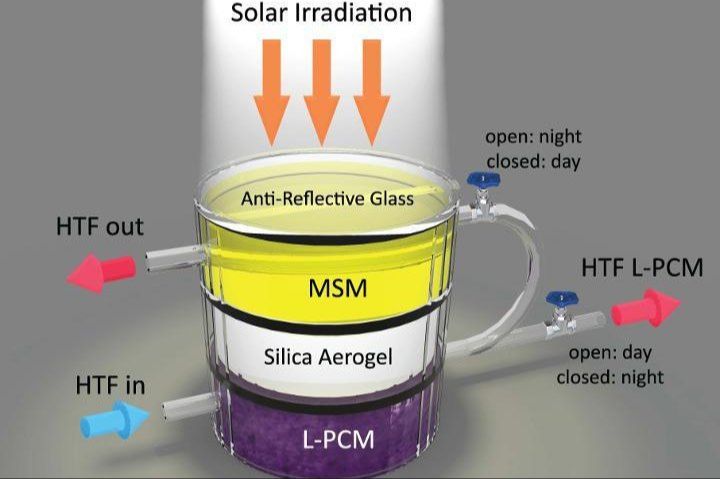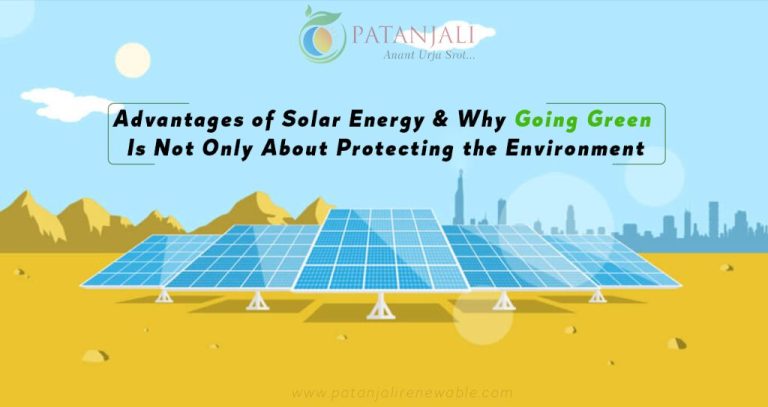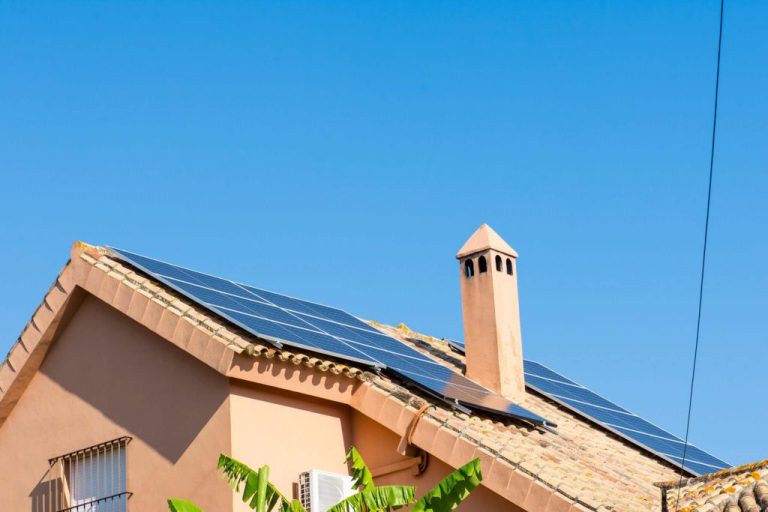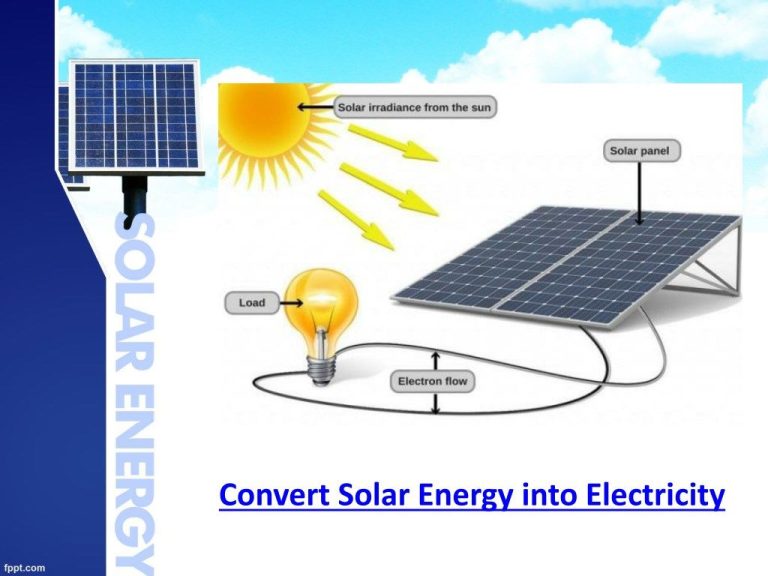How Is Sunlight Converted Into Energy Photosynthesis?
Photosynthesis is the process by which plants, algae, and some bacteria convert sunlight into chemical energy. During photosynthesis, organisms use the energy from sunlight to convert carbon dioxide and water into oxygen and energy-rich carbohydrates like sugars and starches.
Photosynthesis is essential for all aerobic life on Earth. It provides the oxygen that aerobic organisms need to survive. It also provides the energy that producers (plants, algae, cyanobacteria) need to grow and reproduce. This energy is transferred to consumers when they eat producers or other consumers. Without photosynthesis, the Earth’s food webs and oxygen-breathing life forms could not exist.
In addition, photosynthesis helps regulate global climate, because plants absorb and use carbon dioxide during photosynthesis. The carbohydrates produced are used by the plant for energy and growth. However, when plants die and decay, or are consumed, some of the stored carbon returns to the air as carbon dioxide. This cycle keeps carbon dioxide levels in the atmosphere relatively stable over long periods of time.
Photosynthetic Organisms
Photosynthesis occurs in plants, algae, and some bacteria. These organisms contain specialized cell organelles called chloroplasts where photosynthesis takes place. Chloroplasts contain the green pigment chlorophyll which absorbs light energy. Plants are the most familiar photosynthetic organisms. Terrestrial plants carry out photosynthesis in their leaves, which contain many chloroplasts. Algae are simple aquatic organisms that also contain chloroplasts and perform photosynthesis. Some bacteria, such as cyanobacteria, are photosynthetic as well. Overall, any organism with chloroplasts is capable of converting light energy into chemical energy via photosynthesis.
Light-Dependent Reactions
The light-dependent reactions occur in the thylakoid membranes of chloroplasts. This is where the magic of photosynthesis begins, as light energy is absorbed by chlorophyll and converted into chemical energy in the form of ATP and NADPH.
When a photon of light hits chlorophyll, it excites an electron in the chlorophyll molecule. This excited electron gets boosted to a higher energy level and leaves behind a “hole” where the electron used to be. The excited electron is shuttled through an electron transport chain, which uses the electron’s energy to pump hydrogen ions (H+) into the thylakoid space. This creates an H+ gradient and concentration difference on opposite sides of the membrane. The H+ then flow back down this gradient through an enzyme called ATP synthase, which uses their kinetic energy to bond ADP and phosphate together to produce ATP – the energy currency of cells.
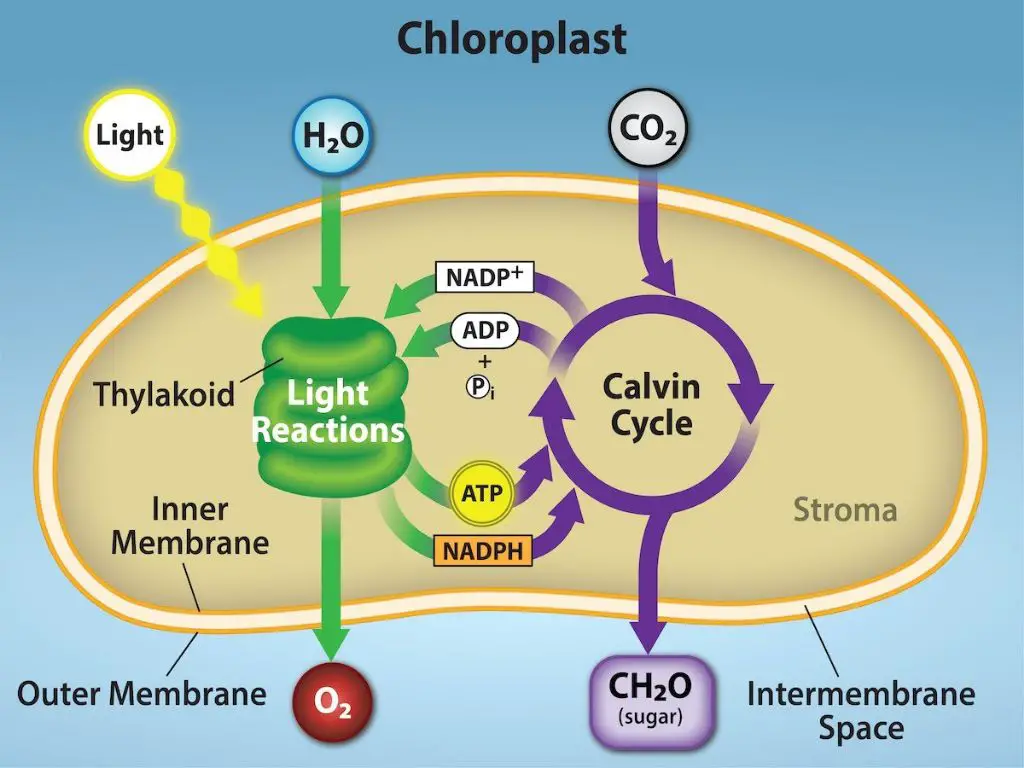
Meanwhile, the “hole” that the excited electron left behind is filled by a special electron from the splitting of water. This splitting provides electrons to replace the ones lost by chlorophyll, and in the process also releases oxygen as a byproduct. The replenished excited electron travels down the electron transport chain, passing through the Photosystem II complex. Here it excites another electron, which gets passed down the chain again. The high-energy electron discarded from Photosystem II is used to make NADP+ into NADPH, another key energy molecule for the cell.
In summary, light energy is initially converted into chemical energy in the form of ATP and NADPH, which will fuel the next stage of photosynthesis. Oxygen is released as a byproduct of the water splitting reaction.
The Electron Transport Chain
The electron transport chain is a series of protein complexes and electron carriers that transport electrons through a series of redox reactions to ultimately produce ATP. It takes place in the thylakoid membrane of chloroplasts during the light-dependent reactions of photosynthesis.
During the light reactions, electrons are stripped from water molecules at photosystem II. These electrons get passed down the electron transport chain, which contains three major protein complexes: cytochrome b6f complex, photosystem I, and ATP synthase. As the electrons move down this chain, they lose energy, which pumps hydrogen ions (protons) across the thylakoid membrane into the lumen through active transport. This creates a proton gradient and membrane potential across the membrane. The protons then flow back down this gradient through ATP synthase, providing the energy to attach a phosphate group to ADP and produce ATP. This entire process of creating a proton gradient to produce ATP is called chemiosmosis.
The end result is the production of ATP and NADPH, which provide the energy and electrons needed for the Calvin cycle reactions during the light-independent reactions. The electron transport chain therefore links the light-dependent and light-independent reactions of photosynthesis together.
Light-Independent Reactions
The second stage of photosynthesis is called the light-independent reactions, or the Calvin cycle. This set of reactions fixes carbon dioxide into organic molecules using the energy captured during the light-dependent reactions. Specifically, the ATP and NADPH generated by the electron transport chain are used to convert carbon dioxide into glucose, a simple sugar.
The Calvin cycle takes place in the stroma of chloroplasts. It starts when an enzyme called Rubisco captures carbon dioxide and attaches it to a five-carbon molecule called ribulose bisphosphate (RuBP). This initial step forms a six-carbon molecule that immediately splits into two three-carbon molecules called 3-phosphoglycerate (3-PGA). Through a series of intermediate steps, these 3-PGA molecules are reduced using electrons from NADPH and phosphorylated using ATP. After several iterations, they are rearranged into molecules of glyceraldehyde-3-phosphate (G3P), a simple three-carbon sugar.
Some of the G3P produced is used to regenerate RuBP so that the cycle can continue fixing more carbon dioxide. The rest of the G3P is combined and rearranged to form glucose or other carbohydrates that the plant needs. The incorporation of carbon dioxide into organic molecules powered by the energy-rich molecules from the light reactions is why the Calvin cycle is called the dark reactions.
Inputs and Outputs
Photosynthesis requires three main inputs in order to produce energy: sunlight, water, and carbon dioxide.
Sunlight provides the energy that drives the chemical reaction of photosynthesis. The visible light that plants absorb triggers the light-dependent reactions which split water molecules and energize electrons. These energized electrons then drive the synthesis of ATP and NADPH which fuel the light-independent reactions.
Water is absorbed through the plant’s roots and provides the electrons needed to replace those lost by chlorophyll molecules in the light-dependent reactions. Water molecules are split in a process called photolysis, which releases oxygen as a byproduct.
Carbon dioxide is absorbed through pores in plant leaves known as stomata. CO2 provides the carbon atoms that are fixed and assembled into glucose molecules during the light-independent reactions of photosynthesis.
Through these inputs, the light-dependent and light-independent reactions produce glucose and oxygen as the main outputs. Glucose stores the energy from photons in the bonds of sugar molecules. Oxygen is released as a byproduct of photolysis and cellular respiration.
Chlorophyll and Accessory Pigments
Chlorophyll is the primary pigment that absorbs sunlight for photosynthesis. It is green in color and has a unique molecular structure that enables it to harvest light energy. Chlorophyll absorbs violet, blue, orange, and red light waves while reflecting green light waves, giving plants their green appearance.
In addition to chlorophyll, plants also contain various carotenoid and anthocyanin pigments that broaden the spectrum of light that can be absorbed and utilized for photosynthesis. Carotenoids such as beta-carotene absorb blue and green light waves and pass energy on to chlorophyll. Anthocyanins absorb green, yellow, and orange light that chlorophyll does not use efficiently. By having this diverse mix of pigments, plants can absorb light energy across the visible spectrum.
The relative concentrations of these accessory pigments vary across plant species and environments. Plants growing in shaded areas tend to have higher anthocyanin levels, while sun-loving plants contain more beta-carotene. This optimizes light absorption for the given conditions to maximize photosynthetic efficiency.
Factors Affecting Rate
The rate of photosynthesis is influenced by several factors, including light intensity, carbon dioxide (CO2) levels, temperature, and water availability. These environmental factors can speed up or slow down the biochemical reactions of photosynthesis.
Light intensity directly impacts the light-dependent reactions of photosynthesis. With more intense light, photons hit the chloroplasts at a faster rate, energizing more electrons. This provides more ATP and NADPH to drive the Calvin cycle reactions. However, at very high intensities, photosystems can become saturated and the rate hits a maximum.
Carbon dioxide concentration affects the light-independent reactions. Higher CO2 levels mean more CO2 will diffuse into the leaf, providing more substrate for the Calvin cycle. However, if CO2 levels get too high, the enzymes can become saturated. Temperature impacts biochemical reaction rates. Moderate warmth accelerates photosynthesis, but too much heat can harm enzymes and membranes. Water is needed to replace electrons lost from the splitting of water in the light reactions. Without sufficient water, the light reactions grind to a halt.
The interplay of these factors results in an optimal rate of photosynthesis under certain environmental conditions. Plants have evolved adaptations to maximize photosynthesis in their native environments. For example, C4 and CAM plants have mechanisms to concentrate CO2 and minimize photorespiration.
C3, C4 and CAM Plants
Plants have evolved different mechanisms of carbon fixation that are adaptations to environmental conditions. There are three main types:
C3 plants use the Calvin cycle for carbon fixation, the first product of which is a 3-carbon compound. C3 plants include trees, wheat, rice, and most temperate species. They are adapted to moderate temperatures and moist conditions. C3 photosynthesis is most efficient when the stomata are open for gas exchange during the day.
C4 plants have adapted to hot, dry conditions where keeping stomata open would lead to excessive water loss. They use an alternate carbon fixation pathway called C4 photosynthesis that results in an initial 4-carbon compound. C4 plants include corn, sugarcane, and many tropical grasses. They fix CO2 into oxaloacetate in mesophyll cells and then transport it as malate to bundle sheath cells, where the Calvin cycle takes place.
CAM plants such as cacti and pineapple have adapted to extremely arid environments. They open stomata at night when temperatures are lower to fix CO2 into oxaloacetate which is then stored as malate. During the day the stomata are closed and the Calvin cycle uses the stored malate for photosynthesis. This conservative water use allows CAM plants to thrive in deserts.
Importance of Photosynthesis
Photosynthesis is a critically important process that has monumental impacts on life on Earth. Without photosynthesis, complex life would not exist.
Photosynthesis provides the energy that supports nearly all life on Earth. By converting solar energy into chemical energy that is stored in glucose, photosynthesis provides the fuel that powers cellular respiration in plants and animals. This stored chemical energy is transferred between organisms through the food chain via consumption, beginning with autotrophic organisms like plants that synthesize their own food through photosynthesis.
Photosynthesis is also responsible for producing and maintaining the oxygen content of our atmosphere. As a byproduct of photosynthesis, plants release oxygen into the air. Over billions of years, the accumulation of this oxygen created the oxic atmosphere that complex aerobic life depends on. Photosynthesis replenishes the atmosphere with oxygen while respiration consumes it.
In summary, photosynthesis powers life by supplying energy, forming the base of the food chain, and creating breathable air. It enabled the evolution of complex life and supports the rich biodiversity we see today. Without photosynthesis continually making energy and oxygen available, most life as we know it could not exist.

